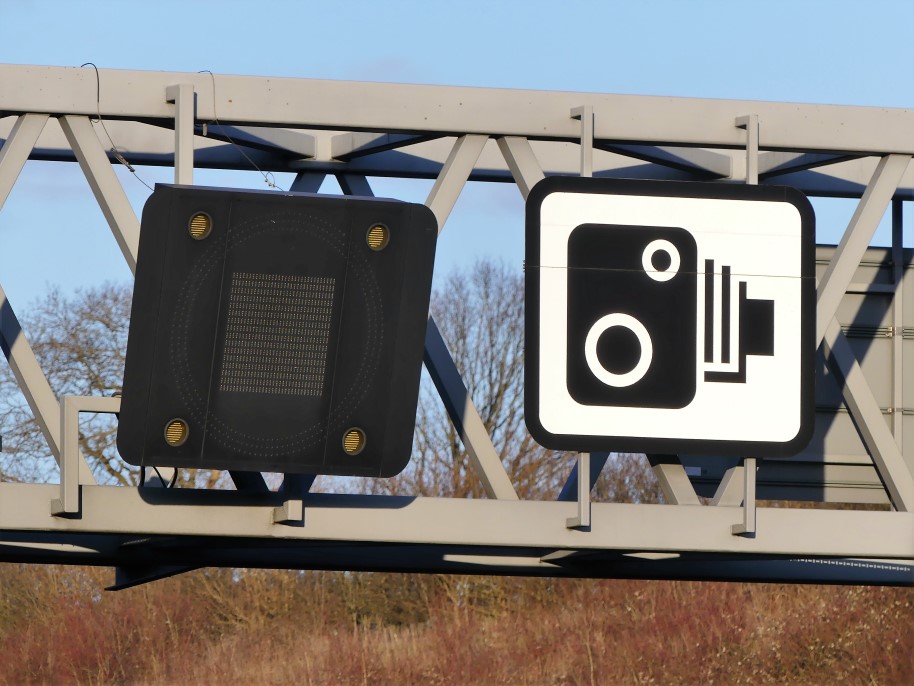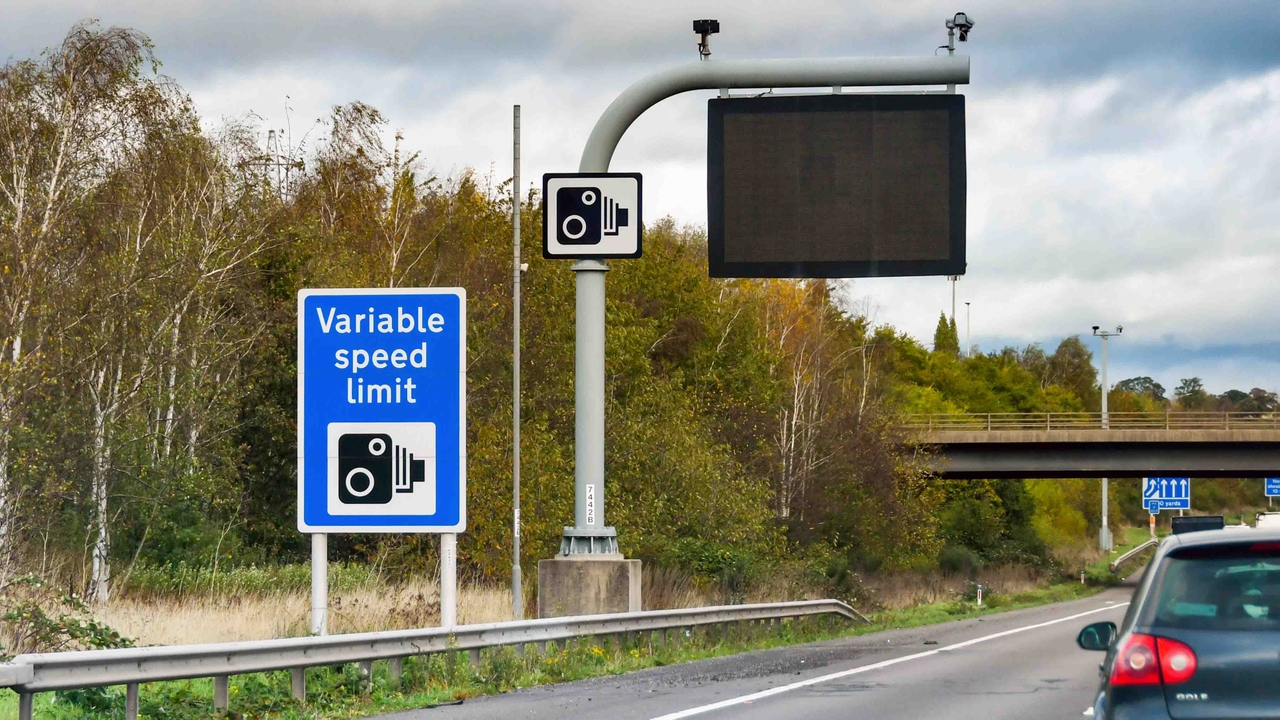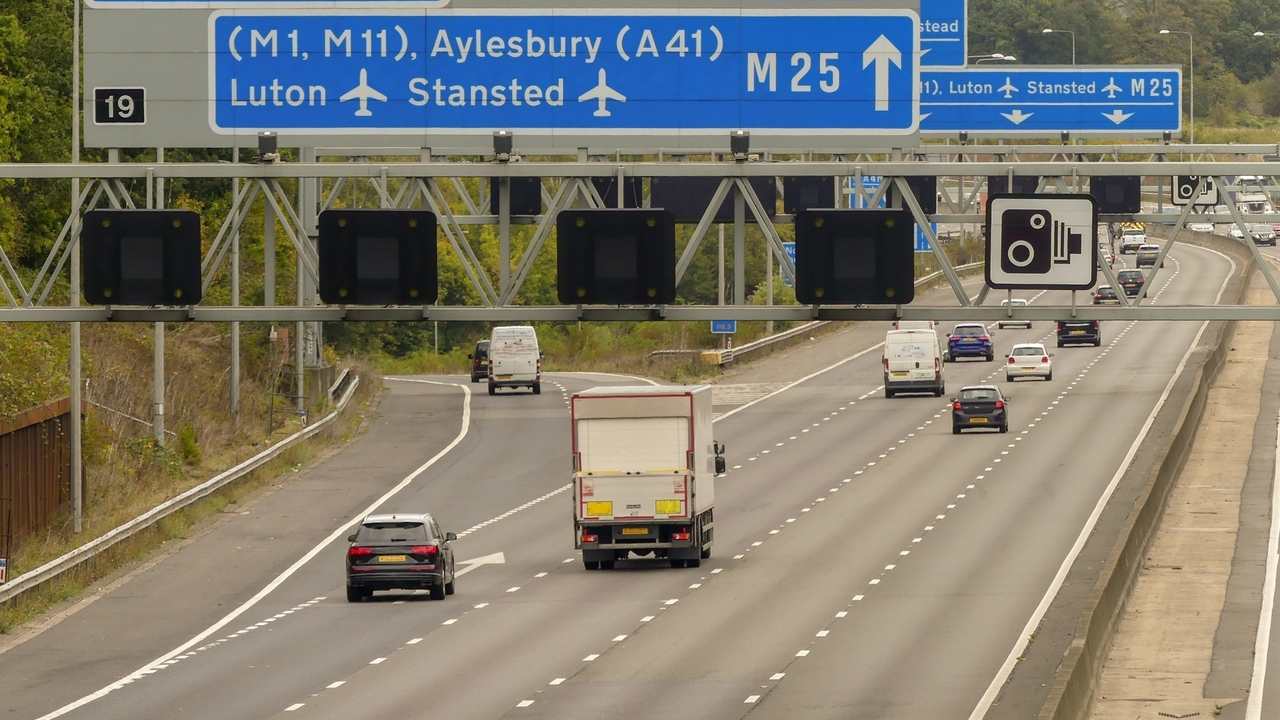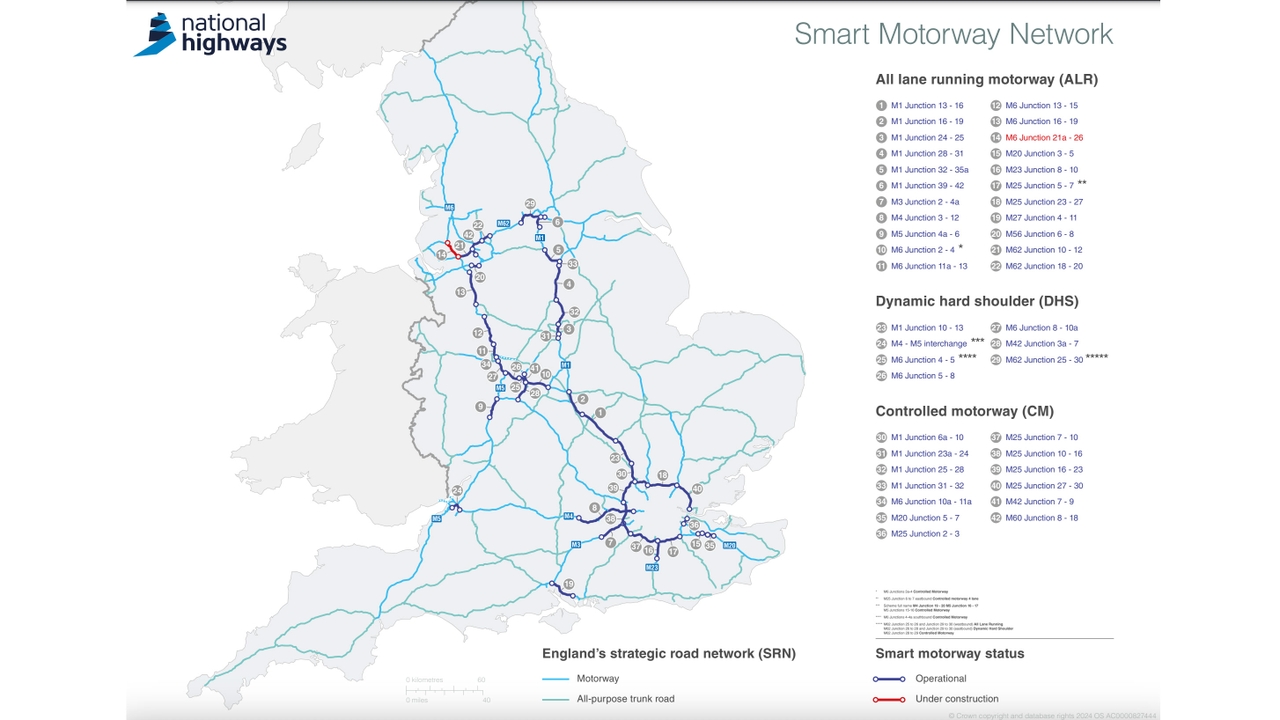Do smart motorways work? Are they dangerous? Are they at all smart, or just there to annoy us? Read on for all the answers.
With traffic on UK roads growing by the year, we need ways to prevent congestion and keep traffic flowing on the country’s busiest motorway stretches. Smart motorways were the preferred solution, using modern technology to improve the efficiency of our major roads. Many smart motorways have turned the hard shoulder into a live lane that you can drive in, but that is controversial and often cited as a key safety drawback.
Recently, the government has conducted a review into smart motorways and is looking at ways to make them safer. This follows a spate of deaths, injuries and dangerous near misses after a vehicle has broken down in a live lane. Here, we explain everything you need to know about the UK’s smart motorway network.
What is a smart motorway and how does it work?
A smart motorway is a section of a motorway that uses traffic management methods to increase capacity and reduce congestion in particularly busy areas. This is done through monitoring traffic via cameras and ‘active’ speed signs – these are overhead signs which flash up with new speed limits to regulate the flow of traffic in the event of an accident or congestion.
In theory, smart motorways increase traffic capacity by 33%, while costing much less – both financially and environmentally – than adding an extra physical lane.
How do smart motorways prevent traffic bunching?
Smart motorways prevent traffic bunching up by having variable speed limits. These can be input manually by staff in the Highways Agency control room, or – often – are flashed up automatically by a computer. This computer uses sensors on the road to measure the speed of vehicles and the distance between them – if the cars get too close, the computer will put up a lower speed limit on the gantries.
The idea is to keep the traffic flowing, even if at a lower speed than the usual 70mph limit – a lower set speed is quicker and safer than cars repeatedly bunching together as the congestion clears. These variable speed limits aim to prevent rear-end collisions and 'phantom' traffic jams with no real cause, which can easily cause a motorway to grind to a halt.
Having a variable speed limit that’s judged on the current conditions can create a smoother journey for drivers. But it also brings benefits to the local area – tailbacks cause extra pollution, and drivers leaving the motorway to try and avoid the congestion cause extra traffic to areas near the motorway.
If you’re learning to drive, make sure to check out our guides to passing your theory test and passing your practical test.
What types of smart motorway are there?

Currently, there are more than 20 stretches of smart motorways covering more than 400 miles in the UK, comprising three different types:
Controlled motorway: Controlled motorways have three or more lanes with variable speed limits, but still have the traditional hard shoulder in place – which should only be used in a genuine emergency.
The variable speed limits are displayed over gantry signs – in the event that no speed limit is displayed on two consecutive boards, then the national speed limit is in place. Speed cameras are used to enforce these.
However, some drivers have noted that sudden variable speed limit changes have forced them to slam on their brakes to reduce their speed in time. To accommodate this, Highways England – those responsible for putting smart motorways in place – say there is a slight lag between the change in speed limit and its enforcement.
Dynamic or hard shoulder running: These motorways use the hard shoulder as a running lane for traffic during busy periods to ease congestion. Overhead gantries indicate whether the hard shoulder is open to traffic. If they are blank or a red X is displayed, the hard shoulder must not be used.
A red X on the gantry means you must exit the lane as soon as possible. Ignoring it is extremely dangerous – there may be a vehicle stranded and Highways Agency personnel could be in the road – and could lead to a fine and prosecution.
As with controlled motorways, speed limits are also variable and displayed on overhead signs.
All lane running: This sees the hard shoulder removed entirely and converted into a running lane. The previous hard shoulder – lane one – is only closed to traffic in the event of an incident. If this is the case, a lane closure will be signalled by a red X on the gantry above, meaning you must exit the lane as soon as possible.
Much like the previous two types, the rules surrounding the red X, as well as the issues of variable speed limits, also apply.
Are smart motorways safe? Or are they dangerous?

The general opinion is that smart motorways are seen as being more dangerous than conventional motorways, due to the lack of a hard shoulder, which some motorists view as a huge compromise on safety.
Highways England, however, has published statistics based on data gathered since the opening of the first smart motorway from 2006, which claims:
- Journey reliability has improved by 22%
- Personal injury accidents have been reduced by more than half
In addition, Highways England has also stated that, since opening, the casualty rate across the nine all lane running schemes has reduced by 28%. With regards to the latest generation of smart motorways, they’ve estimated that there’ll be a further 18% reduction in risk compared to conventional motorways.
The RAC however, has argued that there needs to be changes made to these motorways in order to improve their safety, especially on all running lanes where the hard shoulder has been removed.
Smart motorways do provide orange-painted laybys called ERAs (Emergency Refuge Areas) in an attempt to provide extra safety measures. Earlier smart motorways featured them every 500-800 metres but in 2013, the Department for Transport decided that all new schemes would be of the all lane running variety, stating that ERAs could be distanced as far apart as 1.5 miles.
Emergency services and breakdown rescue providers were concerned about such a distance with regards to both road users and their own staff. Additionally, the removal of a hard shoulder means that emergency services have also had trouble reaching accident scenes.
And, something that's perhaps less thought about is how you rejoin the motorway from an ERA. With a proper hard shoulder you can get up to speed and rejoin safely, whereas from an ERA you have to accelerate from stationary to 70mph in barely any distance – making it much harder and more dangerous to rejoin.
Smart motorways and fines
Obviously, the normal road rules and laws still apply on smart motorways, but there are a few points, in particular, that are worth making clear.
The same laws and sentencing applies for speeding on a smart motorway but, since there are more cameras and variable speed limits, there’s a greater chance of getting caught and fined.
This is further compounded by the fact that smart motorways enforcing variable speed limits can still catch you travelling over the national speed limit when a variable speed limit isn’t in place.
You will get fined if you drive in a lane that’s closed and marked with a red X.
What happens if I break down on a smart motorway?

If you happen to break down or be involved in an accident while on a smart motorway, you should use an emergency refuge area (ERA) if you can reach one safely. If you can’t reach an ERA, you should follow these steps:
- Switch on your hazard lights.
- If you can stop in the nearside or left-most lane, do so. Then, when it’s safe, exit your vehicle via the passenger (left hand) door. Wait behind the safety barrier if one is available. It is important to stand as far away from traffic as possible, whilst keeping your car in sight. Do not stand behind your car.
- If this isn’t possible, stay in your vehicle with your seatbelt on and dial 999 if you have access to a mobile phone.
- Leave pets in the car – the loud traffic rushing past could scare them, or they could distract you.
- Use the orange emergency phones by the side of the motorway to contact the Highways Agency.
Once the relevant highway authority is aware of the incident, they’ll switch on a red cross sign on the gantries above the lane you’re in to stop traffic from entering it.
What are the concerns surrounding smart motorways?
As we've seen, the rollout of smart motorways has not been without its share of criticism. Amid concerns of safety and an increase in the number of fatalities, a proposed national rollout was put on hold in 2020.
The then-transport secretary, Grant Shapps, stated that there will be no more stretches of smart motorway built until the government had completed its review. While sections of these motorways will remain open, the temporary freeze has come as the result of a 20-fold increase in the number of near misses in some locations.
Since then, an 18-point plan has been unveiled by the government, which aims to tackle safety concerns, abolishing “dynamic” hard shoulders, speeding up detection technology for stopped vehicles and building more emergency refuge areas.
Other additional measures announced to improve safety include:
- Speeding up the deployment of stopped vehicle detection technology to cover the network, allowing problems to be spotted within 20 seconds and lanes to be closed at a quicker pace.
- Faster attendance from more Highways England traffic officer patrols on smart motorways.
- Reducing the distance between places to stop in an emergency to three-quarters of a mile where feasible, and to a maximum of one mile.
- Building 10 more emergency areas on the M25 that have had a higher rate of breakdown.
- Increasing the visibility of emergency areas.
- A £5m campaign to increase public awareness and knowledge of smart motorways.
- Automatic detection of and enforcement action against drivers ignoring the red “X” sign in closed lanes.
Hopefully, these steps will help make smart motorways safer, so motorists can enjoy the proposed benefits of eased congestion without increased risk of an accident.

A report by BBC Panorama in April 2024 revealed that the smart motorway network suffered 397 technical failures between June 2022 and February 2024, including for five whole days in June 2023 along a stretch of the M6 near Knutsford in Cheshire.
Which motorways are smart motorways?
After a successful trial on the M42, the smart motorway programme was expanded and now includes nearly all of the M25 and large sections of the M1. You can also find smart motorway sections on the M3, M4, M5, M6, M20, M23, M27, M40, M56, M60 and M62.
Which smart motorways have been scrapped?
In April 2023, the government announced that it had cancelled all its planned smart motorway upgrades, due to “a lack of public confidence” in smart motorways and “cost pressures”. The work being undertaken on junctions 6 to 8 of the M56 and junctions 21a to 26 of the M6 will be finished as both projects are mostly constructed – but the projects planned to upgrade following stretches of smart motorway have all been scrapped:
- M1 junctions 10 to 13; junctions 35a to 39
- M3 junctions 9 to 14
- M4/M5 interchange (M4 junctions 19 to 20 and M5 junctions 15 to 17)
- M6 junctions 4 to 10a; junctions 19 to 21a
- M25 junctions 10 to 16
- M40/M42 interchange
- M42 junctions 3a to 7
- M62 junctions 20-30
Check out our guide to the best cars for motorway driving if you're a regular on the UK's motorway network.


































